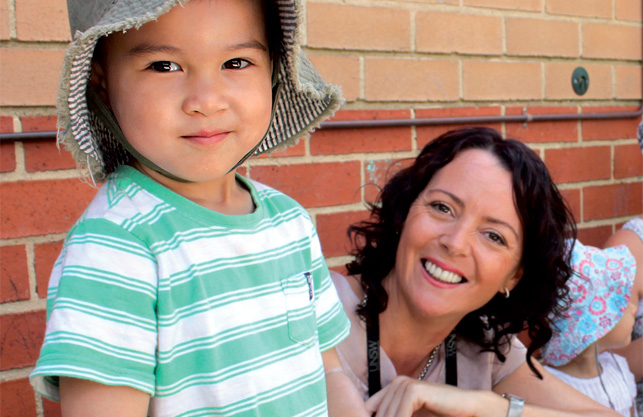In a female-dominated profession known for employing women in their childbearing years, family-friendly staffing arrangements are a priority at the University of New South Wales’ three long day care centres—Kanga’s House, The House at Pooh Corner and Tigger’s Honeypot.
Jemma Carlisle, general manager of Early Years@UNSW University Services, says educators at the recently amalgamated group of UNSW services are offered flexible work arrangements including 36-weeks paid maternity leave (for staff employed for fives years or more) and 26 weeks for staff employed for less than five years.
Educators can negotiate the capacity of their return role and may have until their child starts primary school till they have to return to their original full-time position.
‘Nearly all of our educators return from maternity leave to work part-time and then will have a second baby within that first five years.
‘It can be hard to juggle so many part-time staff but we have long-serving staff so we don’t have retention and attraction issues. Community engagement is strong and our staff and families are so connected.’
The University of New South Wales first began the process of acquiring and amalgamating the three long day care centres under the auspices of the university when voluntary student unionism ended in 2006. Previously, two of the centres had been funded by student organisations. By the end of 2012 the three centres will come under the one management model and cater for 241 children and 75 staff.
There are many benefits to being affiliated with the university such as campus facilities, operating under the university’s workplace agreements and receiving 17 per cent superannuation as part of the university’s superannuation scheme.
‘We are on the university’s pay schedule, so our staff are very well paid. A Cert III, for example, gets $920 per week versus the modern award of $680 per week, and our Diplomas start on $981.00 per week compared to $808.00 on the modern award.
Part of Ms Carlisle’s role is to promote cross-centre collaboration and one obvious way has been to bring all educators together for training.
‘We do expect a lot in terms of out-of-hours meetings but our educators are happy to go that extra mile and enjoy getting together to collaborate.’
In May last year they had a cross-centre EYLF meeting and a series of catered breakfast meetings to flesh out the NQF. At the time of writing, Ms Carlisle was also planning an NQS session on a Friday afternoon/evening.
‘It’s a child-free day and the first day back for many educators so the meeting will be followed by ‘welcome back’ food and drinks.’
Two years ago Ms Carlisle also started a successful rewards and recognition program for which she gets staff to self-nominate.
‘I send a template to all staff asking them what they have done throughout the year that they are most proud of or where they feel they have gone above and beyond.’
It could be studying, attending professional development in their own time, reading in their lunch break, subscribing to industry journals or becoming members of peak bodies, she says.
‘The first year, one educator got $5,000 to put towards her university fees. Smaller rewards are also offered such as a $200 Myers shopping voucher.
‘Ideally, I want educators to think about it pro-actively—not just as a reflection exercise. This would encourage goal-setting and planning for the year.’
All directors are non-teaching directors with full-time administrators, and each centre has additional floaters or what the Early Years@UNSW team like to now call ‘curriculum support’ staff.
‘We feel that when they are called ‘floaters’, it implies that their main priority is solely to cover absent staff but we want to build up a strong network of casuals so the priority is programming and developing the curriculum even if people are away.’
The three children’s services will come together for a professional development day mid-year. This is typically dedicated to ‘ticking off any mandatory training’ or enjoying team-building activities such as white water rafting. However, this year the plan is to have all three services open their doors to showcase their centres to one another.’
‘All educators will be involved whether it is conducting a centre tour, cooking food or doing a presentation. I want each service to think about what makes it unique—the essence of each centre— and what they are most proud of.
Construction has also begun on a fourth long day care centre for the university. The proposed 48-place centre is due to open in the second half of 2012.
This article first appeared in Rattler Magazine, Issue 101, Autumn 2012



No Comments Yet